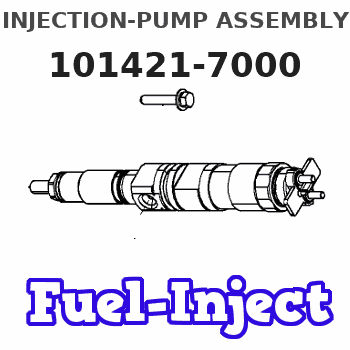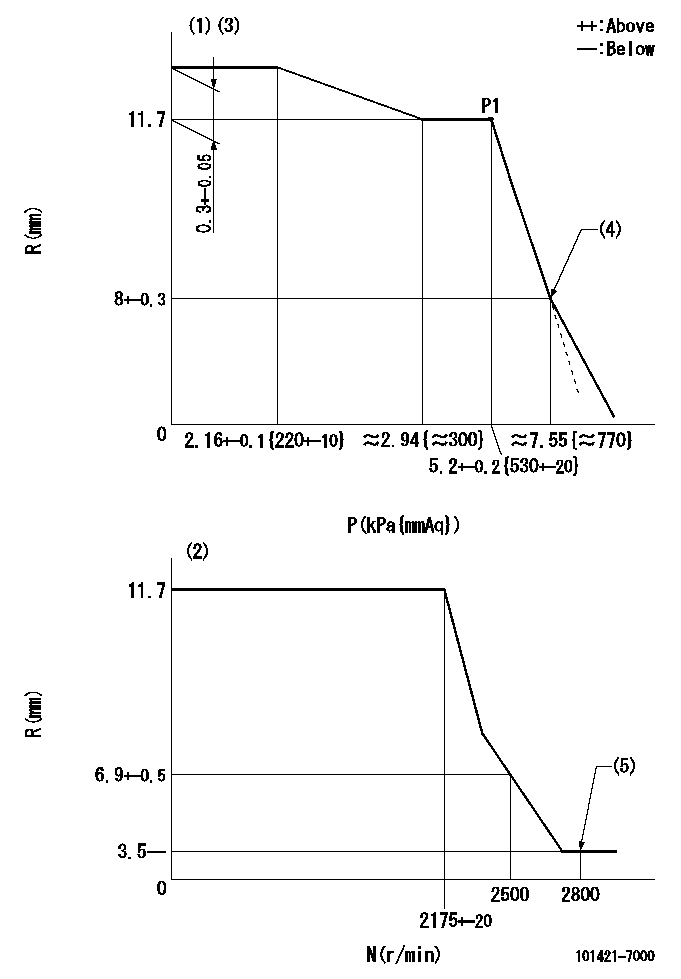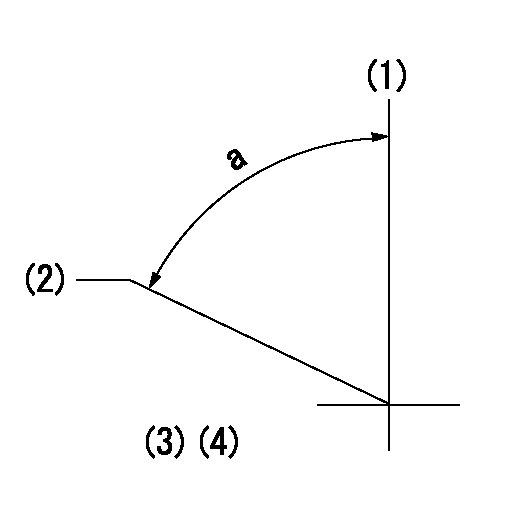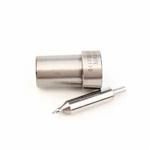Information injection-pump assembly
BOSCH
F 01G 09U 01H
f01g09u01h
ZEXEL
101421-7000
1014217000
ISUZU
5156011151
5156011151

Rating:
Service parts 101421-7000 INJECTION-PUMP ASSEMBLY:
1.
_
6.
COUPLING PLATE
7.
COUPLING PLATE
8.
_
9.
_
11.
Nozzle and Holder
5-15300-067-1
12.
Open Pre:MPa(Kqf/cm2)
11.8{120}
15.
NOZZLE SET
Cross reference number
BOSCH
F 01G 09U 01H
f01g09u01h
ZEXEL
101421-7000
1014217000
ISUZU
5156011151
5156011151
Zexel num
Bosch num
Firm num
Name
101421-7000
F 01G 09U 01H
5156011151 ISUZU
INJECTION-PUMP ASSEMBLY
C190 * K
C190 * K
Calibration Data:
Adjustment conditions
Test oil
1404 Test oil ISO4113 or {SAEJ967d}
1404 Test oil ISO4113 or {SAEJ967d}
Test oil temperature
degC
40
40
45
Nozzle and nozzle holder
105780-8140
Bosch type code
EF8511/9A
Nozzle
105780-0000
Bosch type code
DN12SD12T
Nozzle holder
105780-2080
Bosch type code
EF8511/9
Opening pressure
MPa
17.2
Opening pressure
kgf/cm2
175
Injection pipe
Outer diameter - inner diameter - length (mm) mm 6-2-600
Outer diameter - inner diameter - length (mm) mm 6-2-600
Tester oil delivery pressure
kPa
157
157
157
Tester oil delivery pressure
kgf/cm2
1.6
1.6
1.6
Direction of rotation (viewed from drive side)
Left L
Left L
Injection timing adjustment
Direction of rotation (viewed from drive side)
Left L
Left L
Injection order
1-3-4-2
Pre-stroke
mm
1.75
1.7
1.8
Rack position
R=11.7
Beginning of injection position
Drive side NO.1
Drive side NO.1
Difference between angles 1
Cal 1-3 deg. 90 89.5 90.5
Cal 1-3 deg. 90 89.5 90.5
Difference between angles 2
Cal 1-4 deg. 180 179.5 180.5
Cal 1-4 deg. 180 179.5 180.5
Difference between angles 3
Cyl.1-2 deg. 270 269.5 270.5
Cyl.1-2 deg. 270 269.5 270.5
Injection quantity adjustment
Adjusting point
D
Rack position
11.7
Pump speed
r/min
1800
1800
1800
Average injection quantity
mm3/st.
37
36.1
37.9
Max. variation between cylinders
%
0
-2.5
2.5
Basic
*
Fixing the rack
*
Injection quantity adjustment_02
Adjusting point
F
Rack position
6.5+-0.5
Pump speed
r/min
300
300
300
Average injection quantity
mm3/st.
7
5.9
8.1
Max. variation between cylinders
%
0
-14
14
Fixing the rack
*
Injection quantity adjustment_03
Adjusting point
G
Rack position
-
Pump speed
r/min
150
150
150
Average injection quantity
mm3/st.
52
52
Fixing the rack
*
Remarks
Excess fuel for starting.
Excess fuel for starting.
Injection quantity adjustment_04
Adjusting point
-
Rack position
-
Pump speed
r/min
1800
1800
1800
Average injection quantity
mm3/st.
37
36.5
37.5
Remarks
Smoke setting: 4.41 kPa {450 mmAq}
Smoke setting: 4.41 kPa {450 mmAq}
Timer adjustment
Pump speed
r/min
800+-50
Advance angle
deg.
0
0
0
Remarks
Start
Start
Timer adjustment_02
Pump speed
r/min
1100
Advance angle
deg.
1.7
1.2
2.2
Timer adjustment_03
Pump speed
r/min
1500
Advance angle
deg.
4
3.3
4.7
Timer adjustment_04
Pump speed
r/min
1900
Advance angle
deg.
5.3
4.6
6
Timer adjustment_05
Pump speed
r/min
2250
Advance angle
deg.
6.5
6
7
Remarks
Finish
Finish
Test data Ex:
Governor adjustment

N:Pump speed
R:Rack position (mm)
P:Negative pressure
(1)Pneumatic governor
(2)Mechanical governor
(3)Acting negative pressure: P1
(4)Beginning of idle sub spring operation: L1
(5)Injection quantity Q = Q1 or less
----------
L1=8+-0.3mm Q1=3mm3/st
----------
----------
L1=8+-0.3mm Q1=3mm3/st
----------
Timing setting

(1)Pump vertical direction
(2)Gear mark Z for the No. 4 cylinder's beginning of injection
(3)B.T.D.C.: aa
(4)-
----------
aa=18deg
----------
a=(60deg)
----------
aa=18deg
----------
a=(60deg)
Information:
Oils
Hot oil and components can cause personal injury. Do not allow hot oil or components to contact the skin.Keep all exhaust manifold and turbocharger shields in place to protect hot exhaust from oil spray in the event of a line, tube or seal failure.Batteries
Battery electrolyte contains acid and can cause injury. Avoid contact with the skin and eyes.Wash hands after touching batteries and connectors. Use of gloves is recommended.Batteries give off flammable fumes which can explode. Ensure there is proper ventilation for batteries which are located in an enclosure.Always thaw a frozen battery before jump starting. Frozen batteries can explode.Do not smoke when observing battery electrolyte levels.Always wear protective glasses when working with batteries.Never disconnect any charging unit circuit or battery circuit cable from the battery when charging unit is operating. A spark can cause the flammable vapor mixture of hydrogen and oxygen to explode.Fire or Explosion Prevention
Fire may result from lubricating oil or fuel sprayed on hot surfaces causing personal injury and property damage. Inspect all lines and tubes for wear or deterioration. They must be routed, supported or clamped securely. Tighten all connections to the recommended torque. Leaks can cause fires.Determine whether the engine will be operated in an environment in which combustible gases could be drawn through the air inlet system. These gases could cause the engine to overspeed, which in turn could seriously damage the engine and result in bodily injury or property damage.If your application involves the presence of combustible gases, consult your Caterpillar dealer to obtain additional information concerning protection devices (i.e. air inlet shutoff) suitable for the application involved.All fuels, most lubricants and some coolant mixtures are flammable.Diesel fuel is flammable. Gasoline is flammable. The mixture of diesel and gasoline fumes is extremely explosive.Do not smoke while refueling or in a refueling area.Do not smoke in areas where batteries are charged, or where flammable materials are stored.Batteries give off flammable fumes which can explode.Keep all fuels and lubricants stored in properly marked containers and away from all unauthorized persons.Store all oily rags or other flammable material in a protective container, in a safe place.Do not weld or flame cut on pipes or tubes that contain flammable fluids. Clean them thoroughly with nonflammable solvent before welding or flame cutting on them.Remove all flammable materials such as fuel, oil and other debris before they accumulate on the engine.Do not expose the engine to flames, burning brush, etc., if at all possible.Shields (if equipped), which protect hot exhaust components from oil or fuel spray in the event of a line, tube or seal failure, must be installed correctly.Provide adequate and proper waste oil disposal. Oil and fuel filters must be properly installed and housing covers tightened to proper torque when being changed.Batteries must be kept clean, covers kept on all cells, recommended cables and connections used and battery box covers kept in place when operating.When starting from an external source, always connect the positive (+) jumper cable to the POSITIVE (+) terminal of the
Hot oil and components can cause personal injury. Do not allow hot oil or components to contact the skin.Keep all exhaust manifold and turbocharger shields in place to protect hot exhaust from oil spray in the event of a line, tube or seal failure.Batteries
Battery electrolyte contains acid and can cause injury. Avoid contact with the skin and eyes.Wash hands after touching batteries and connectors. Use of gloves is recommended.Batteries give off flammable fumes which can explode. Ensure there is proper ventilation for batteries which are located in an enclosure.Always thaw a frozen battery before jump starting. Frozen batteries can explode.Do not smoke when observing battery electrolyte levels.Always wear protective glasses when working with batteries.Never disconnect any charging unit circuit or battery circuit cable from the battery when charging unit is operating. A spark can cause the flammable vapor mixture of hydrogen and oxygen to explode.Fire or Explosion Prevention
Fire may result from lubricating oil or fuel sprayed on hot surfaces causing personal injury and property damage. Inspect all lines and tubes for wear or deterioration. They must be routed, supported or clamped securely. Tighten all connections to the recommended torque. Leaks can cause fires.Determine whether the engine will be operated in an environment in which combustible gases could be drawn through the air inlet system. These gases could cause the engine to overspeed, which in turn could seriously damage the engine and result in bodily injury or property damage.If your application involves the presence of combustible gases, consult your Caterpillar dealer to obtain additional information concerning protection devices (i.e. air inlet shutoff) suitable for the application involved.All fuels, most lubricants and some coolant mixtures are flammable.Diesel fuel is flammable. Gasoline is flammable. The mixture of diesel and gasoline fumes is extremely explosive.Do not smoke while refueling or in a refueling area.Do not smoke in areas where batteries are charged, or where flammable materials are stored.Batteries give off flammable fumes which can explode.Keep all fuels and lubricants stored in properly marked containers and away from all unauthorized persons.Store all oily rags or other flammable material in a protective container, in a safe place.Do not weld or flame cut on pipes or tubes that contain flammable fluids. Clean them thoroughly with nonflammable solvent before welding or flame cutting on them.Remove all flammable materials such as fuel, oil and other debris before they accumulate on the engine.Do not expose the engine to flames, burning brush, etc., if at all possible.Shields (if equipped), which protect hot exhaust components from oil or fuel spray in the event of a line, tube or seal failure, must be installed correctly.Provide adequate and proper waste oil disposal. Oil and fuel filters must be properly installed and housing covers tightened to proper torque when being changed.Batteries must be kept clean, covers kept on all cells, recommended cables and connections used and battery box covers kept in place when operating.When starting from an external source, always connect the positive (+) jumper cable to the POSITIVE (+) terminal of the
Have questions with 101421-7000?
Group cross 101421-7000 ZEXEL
Isuzu
101421-7000
F 01G 09U 01H
5156011151
INJECTION-PUMP ASSEMBLY
C190
C190
